
Introduction
The InterPlanetary File System (IPFS) is a revolutionary protocol designed to transform how data is stored, accessed, and shared on the internet. Created by Protocol Labs, IPFS moves away from traditional centralized models like HTTP, providing a peer-to-peer (P2P) network that enhances decentralization, resilience, and user control over data.

This system is set to redefine the landscape of file sharing and storage, particularly within Web3 applications, blockchain systems, and decentralized networks. IPFS operates through content-addressed data sharing, providing multiple benefits such as verifiability, improved performance, and data sovereignty. In this review, we explore what is IPFS, how it works, and the potential it holds for the future of decentralized storage.
How IPFS Works
Here is a comprehensive breakdown of how the IPFS blockchain works:
1. Content Addressing and Content Identifiers (CID)
At the heart of IPFS is the concept of content addressing, which differs significantly from traditional location-based addressing used in HTTP. In IPFS, every piece of data is chunked into smaller blocks, and each block is assigned a unique Content Identifier (CID). This CID is generated by hashing the data, ensuring that each piece of content is immutable and uniquely identifiable.
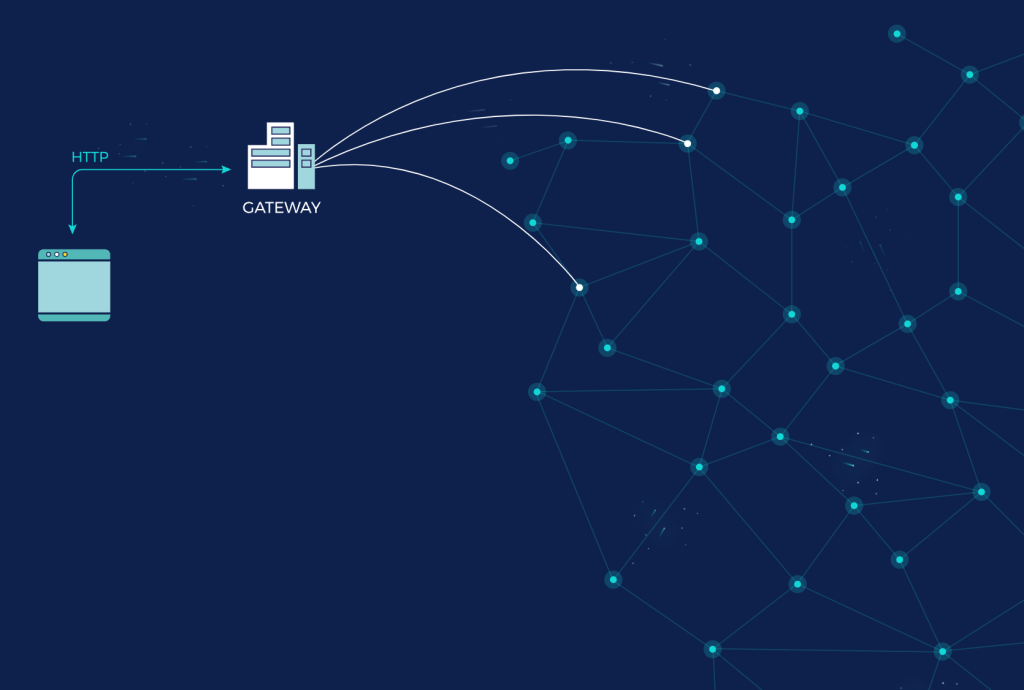
This structure enables users to access the data from any node in the IPFS network that has the corresponding CID, without relying on a central server. The decentralization in content addressing is key to IPFS’s resilience and efficiency, allowing for faster and more secure data retrieval. If a node in the network is unavailable, the data can still be retrieved from any other node holding that CID, drastically reducing the risk of data loss or downtime.
2. IPFS and InterPlanetary Linked Data (IPLD)
IPFS leverages InterPlanetary Linked Data (IPLD) to manage and represent content-addressed data across the network. IPLD enables the creation of hierarchical data structures like directories and file systems, with relationships between the data represented in a Merkle Directed Acyclic Graph (Merkle DAG). This system allows for efficient storage, retrieval, and verification of data by linking chunks of information cryptographically.
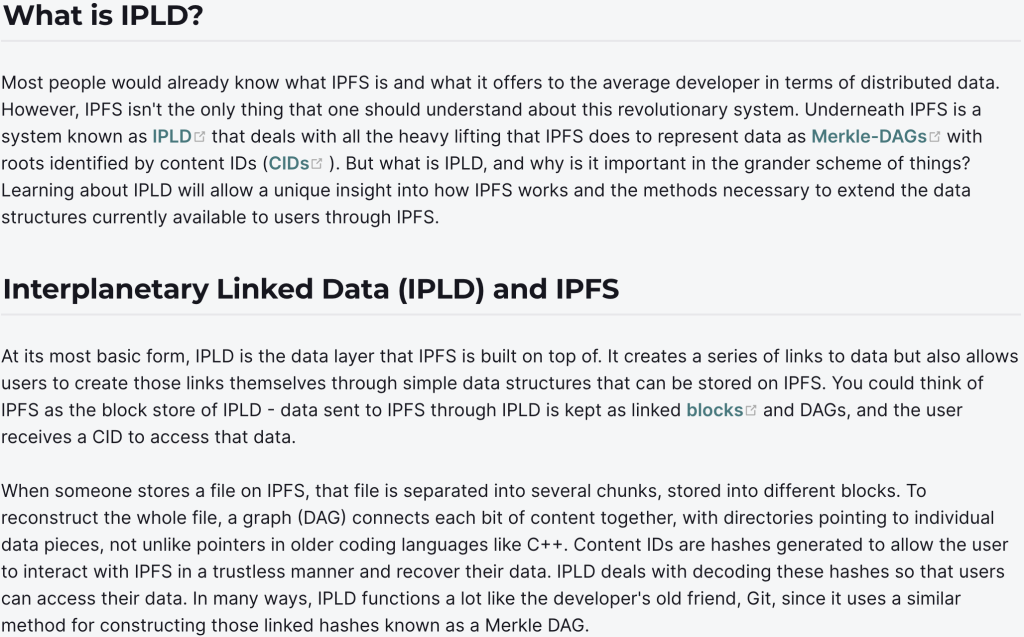
For files too large to fit into a single block, IPFS uses UnixFS, an IPLD format specifically designed for representing and managing such files. This ensures that large datasets, multimedia content, or complex directory structures can be stored and navigated with ease within IPFS.
3. Peer-to-Peer Connectivity and Content Routing
IPFS functions as a peer-to-peer network, meaning that any node can directly connect to others and share data. To locate peers and requested content, IPFS uses several subsystems for content routing:
- Kademlia Distributed Hash Table (DHT): A decentralized system for tracking which nodes store specific CIDs. It helps nodes find other peers that hold the data they are searching for.
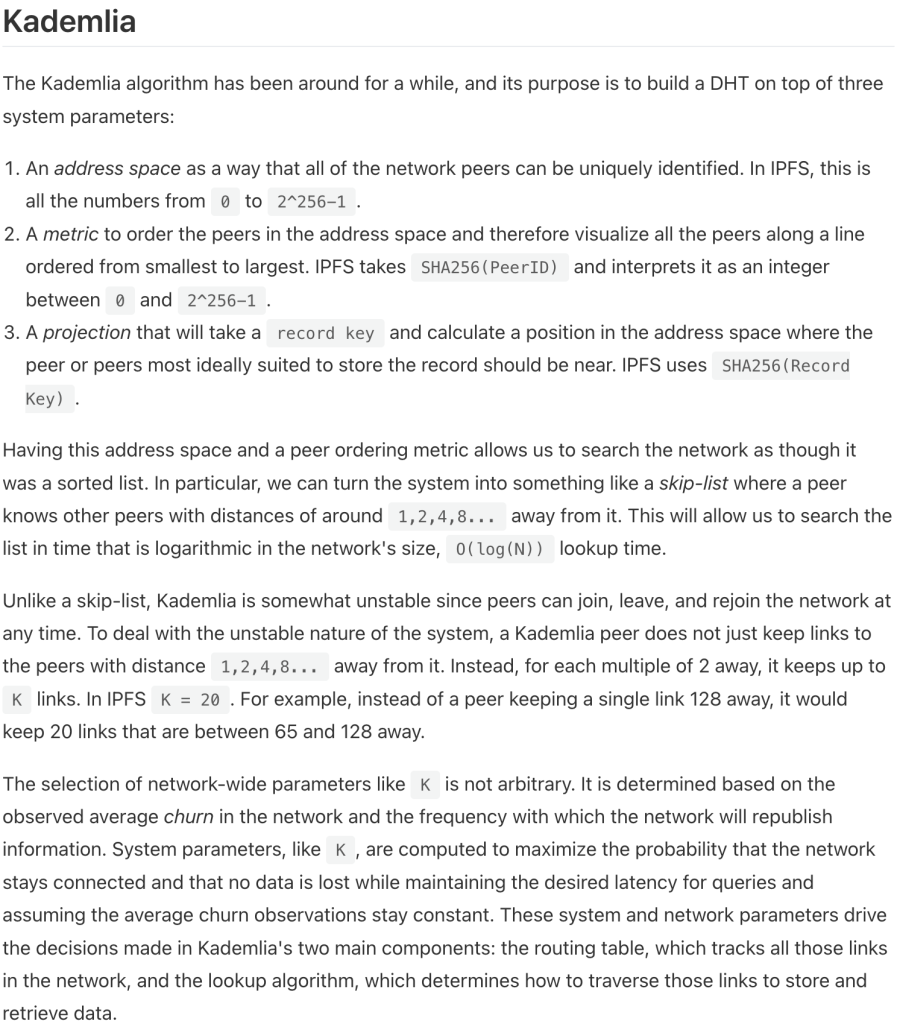
- Bitswap Protocol: A message-based peer-to-peer protocol that allows nodes to request and exchange blocks of data with their peers without traversing the entire DHT.
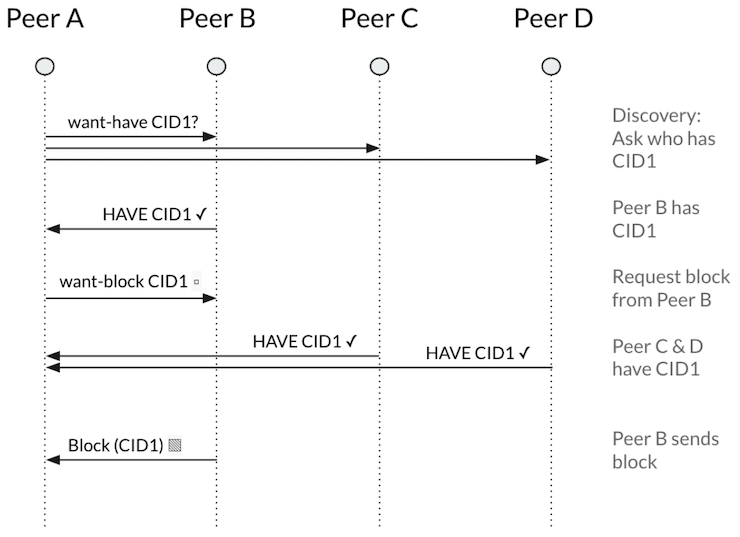
These subsystems enable IPFS to operate efficiently in large, distributed environments by minimizing latency and avoiding bottlenecks that can occur in traditional client-server models.
Problems IPFS Solves
IPFS addresses several key challenges that traditional internet protocols like HTTP struggle with:
1. Centralization
One of the primary problems with the modern web is its reliance on centralized servers. In HTTP, data is typically stored and accessed from a central server controlled by a single entity, creating vulnerabilities such as data loss, censorship, and single points of failure. IPFS solves this problem by distributing data across a network of nodes, eliminating the need for a central server and ensuring that data is always accessible as long as at least one node has it.
2. Verifiability
Traditional web protocols lack strong mechanisms for ensuring the integrity and authenticity of data. IPFS, on the other hand, uses cryptographic hashes to verify that data has not been tampered with. When data is retrieved using its CID, the hash is recalculated and compared with the original, providing strong verifiability.
3. Data Sovereignty and Ownership
In centralized systems, users often have limited control over their data, relying on third-party service providers to manage, store, and even govern access to it. IPFS changes this dynamic by giving users direct control over where and how their data is stored and shared. With no need for intermediaries, IPFS restores data sovereignty to users, allowing them to take full ownership of their content.
4. Link Rot and Permanent Availability
A common problem with traditional URLs is link rot, where links break when the server hosting the content goes offline or changes its structure. IPFS eliminates this issue by making data addressable by its content rather than its location. Once content is added to IPFS, it remains accessible as long as at least one node stores it, regardless of server availability or domain name changes.
5. Performance and Efficiency
Traditional web systems rely on location-based addressing, meaning that users often retrieve data from a server that may be far away, leading to higher latency and bandwidth issues. The IPFS blockchain improves performance by allowing data to be retrieved from the nearest available node, reducing latency and improving efficiency, especially for popular content that can be replicated across the network.
6. Vendor Lock-In
In cloud storage solutions, users often face vendor lock-in, where they become dependent on a single service provider’s infrastructure, APIs, and pricing structures. This makes it difficult to migrate data or switch providers. IPFS avoids vendor lock-in by using an open, community-maintained protocol that allows users to store data wherever they want without being tied to a single vendor.
Use Cases and Applications of IPFS
IPFS has gained traction across various industries, particularly in areas requiring decentralized, secure, and resilient data storage. Some notable applications include:
1. Blockchain and Decentralized Applications (dApps)
IPFS is frequently used in conjunction with blockchain networks to provide off-chain data storage. Since blockchain systems typically store only small amounts of data due to scalability concerns, IPFS offers a solution for storing larger datasets while maintaining a link to the blockchain via CIDs. This is commonly used in dApps for storing files, metadata, and digital assets like NFTs.

2. Media Sharing and Content Delivery
As per the IPFS website, its decentralized model is well-suited for media sharing platforms that prioritize user control over content distribution. The music streaming service Audius, for example, leverages IPFS to enable artists to store and distribute music in a decentralized manner, ensuring that artists retain full ownership over their work and that content is resilient against censorship.
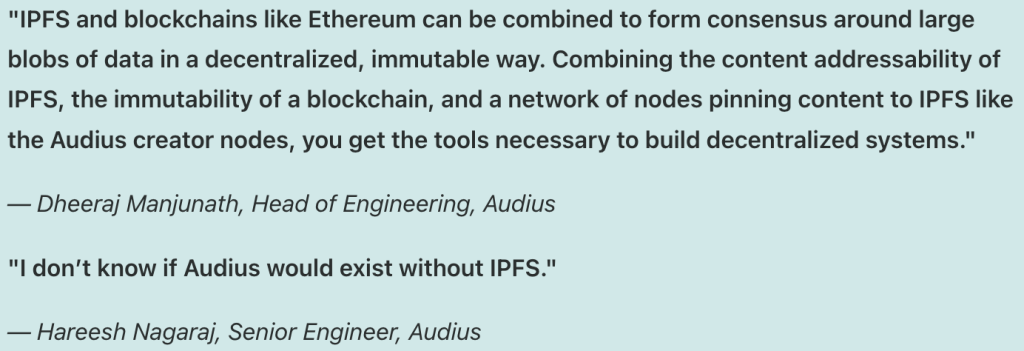
3. Decentralized Web Hosting
Platforms like Fleek use IPFS to offer decentralized web hosting solutions. By storing websites and applications on IPFS, Fleek provides users with resilient, censorship-resistant hosting, ensuring that content remains available even if traditional web servers go offline.
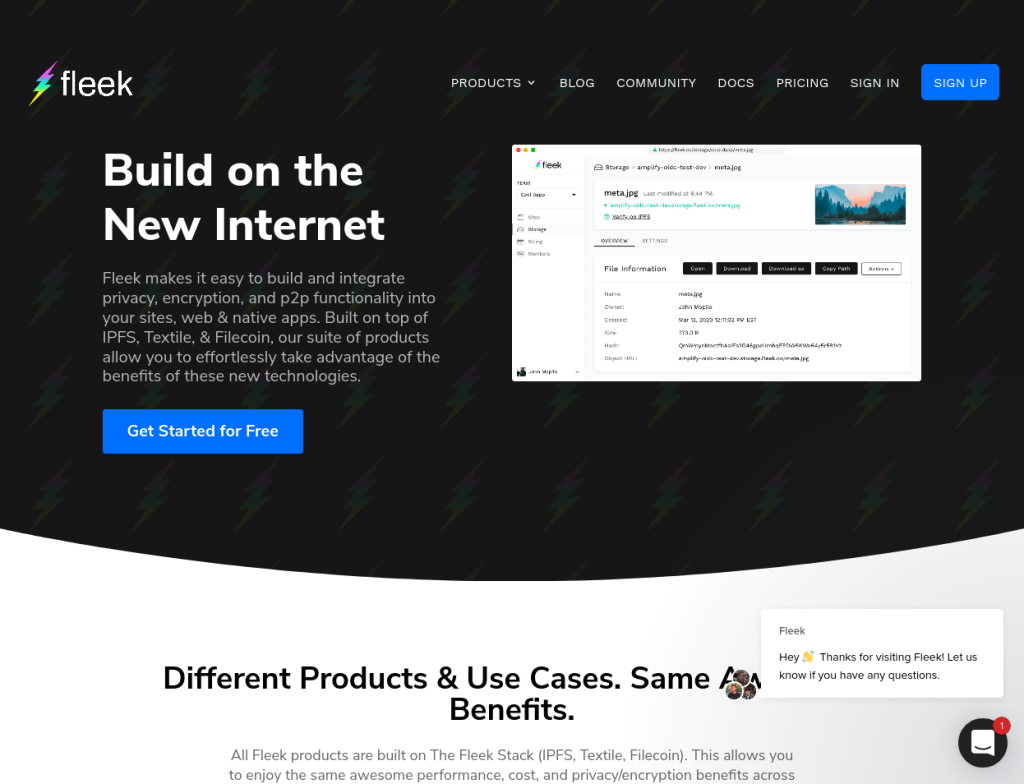
4. Scientific Data Storage and Archiving
IPFS is also being used to address the challenge of storing large scientific datasets. Its verifiability, data integrity, and decentralized storage make it ideal for preserving valuable scientific research and making it accessible over long periods without the risk of data corruption or loss.

Challenges and Limitations of IPFS
Despite its numerous advantages, IPFS is not without its challenges:
1. Data Persistence and Pinning
One of the primary limitations of IPFS is ensuring that data remains available over time. While data is distributed across nodes, there is no guarantee that a specific piece of data will always be hosted by a node unless it is explicitly “pinned” by users or service providers. Pinning services have emerged to address this issue, but this adds complexity to IPFS’s implementation.
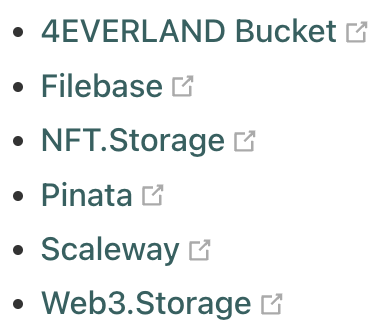
2. Scalability and Performance in Large Networks
While the IPFS blockchain excels in smaller decentralized networks, there are scalability concerns as the network grows. As the number of nodes increases, maintaining efficient routing and retrieval of data can become more complex. Protocols like Bitswap and Kademlia DHT help manage this, but scaling up in massive global networks remains a challenge.
3. Privacy and Data Confidentiality
As per the IPFS website, it is designed for public and open networks, which means that any data stored on IPFS is accessible to all nodes in the network unless encrypted. While encryption solutions can be implemented, they require careful management to ensure that sensitive data remains confidential.
Conclusion: The Future of IPFS
IPFS represents a fundamental shift in how data is stored, shared, and managed on the internet. Its decentralized architecture, content-addressing model, and resilience make it an ideal solution for a wide range of applications, from decentralized applications and blockchain storage to media sharing and scientific archiving.
As the world increasingly moves towards decentralized technologies and the Web3 era, IPFS will likely play a critical role in ensuring that data remains accessible, verifiable, and owned by its users. Despite challenges in scalability, data persistence, and IPFS payments, ongoing improvements to the protocol and ecosystem show great promise for IPFS to continue evolving and supporting a new era of the decentralized web.
Frequently Asked Questions
What is IPFS?
IPFS (InterPlanetary File System) is a decentralized, peer-to-peer file storage protocol that aims to change the way information is shared and stored on the web. Instead of using a central server, it distributes data across a network of nodes, enhancing data security, access, and resilience.
How does IPFS work?
IPFS works by breaking data into smaller chunks, each with a unique identifier known as a Content Identifier (CID). These chunks are stored across multiple nodes in the network. When users request a file, IPFS locates and retrieves it from the closest node storing that data, ensuring faster access and reducing downtime.
What is a CID in IPFS?
A Content Identifier (CID) is a unique cryptographic hash that points to a specific piece of data on the IPFS network. It allows for secure, verifiable, and immutable storage and retrieval of data.
How is IPFS different from traditional HTTP?
Unlike HTTP, which retrieves data from a specific location (URL), IPFS retrieves data based on its content (CID), which can be accessed from any node in the network. This ensures data redundancy and prevents single points of failure.
What are the primary use cases of IPFS?
Decentralized storage for blockchain and dApps, media sharing and content delivery, scientific data archiving, decentralized web hosting
What are the advantages of IPFS?
Decentralization: No reliance on centralized servers. Content persistence: Data remains accessible as long as one node stores it. Efficiency: Data can be accessed from the nearest node, reducing latency. Verifiability: Cryptographic hashing ensures data integrity.
Does IPFS have any limitations?
Yes, IPFS faces challenges such as ensuring long-term data persistence without central control and maintaining performance as the network scales. Data must be “pinned” to stay available indefinitely, and privacy concerns exist as data is publicly accessible unless encrypted.
What industries use IPFS?
IPFS is widely adopted in blockchain ecosystems, decentralized applications (dApps), media sharing platforms, scientific archiving, and decentralized web hosting services.
What is the future of IPFS?
As Web3 and decentralized technologies evolve, IPFS is set to play a crucial role in offering secure, verifiable, and decentralized data storage solutions. With ongoing improvements, IPFS will continue to support decentralized applications and broader use cases.









